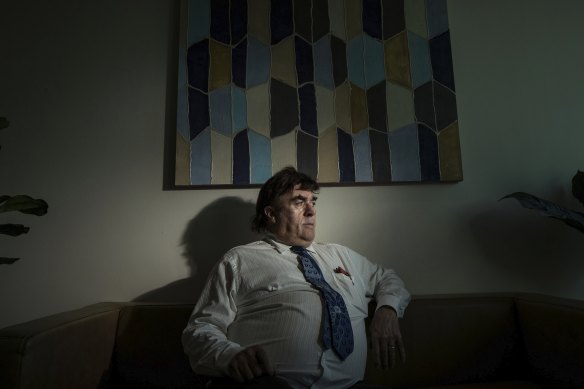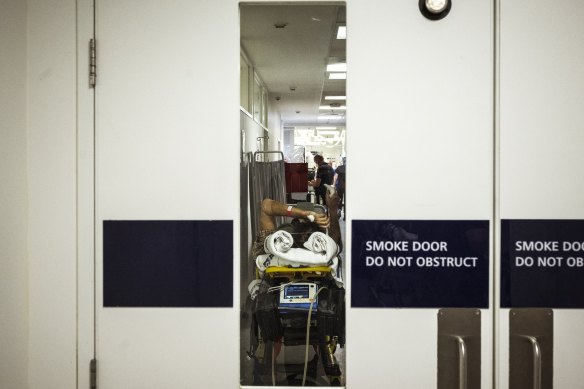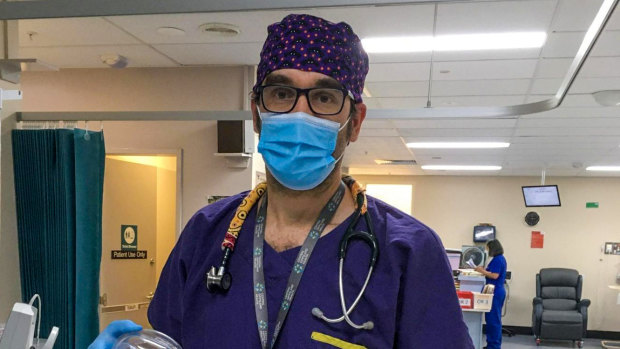Key points
- Patients in rural Victoria are being charged hundreds of dollars for urgent care that is free in Melbourne.
- Unequal access to care has raised concerns some ill people might delay seeking treatment.
- Healthcare groups want the state government to ensure the urgent treatment is provided for free.
Patients in regional Victoria face hefty fees for urgent healthcare that is free at emergency departments in Melbourne, prompting calls for the major political parties to guarantee equal access to care, regardless of where Victorians live.
Healthcare groups fear some people are putting off treatment for injuries, infections and other ailments to avoid fees at urgent care centres that operate across rural Victoria.
Andrew Bibby was charged $209 for a visit to Stawell’s urgent care centre. Credit:Darrian Traynor
Access to healthcare and cost of living pressures were among the top issues raised by voters who spoke to The Age for the Victoria’s Agenda project, which will shape coverage of the November 26 state election.
Concerns about healthcare were particularly pronounced among people in regional Victoria.
Urgent care centres are often part of small rural hospitals and are generally staffed by nurses and on-call doctors.
But unlike state-funded public hospital emergency departments, they are funded by Medicare and can charge out-of-pocket fees.
The centres can also charge for other services, such as blood tests, that can quickly amount to hundreds of dollars.
Victorian Healthcare Association deputy chief executive Juan Paolo Legaspi urged the state government to fully fund the centres, so patients were not slugged with emergency treatment costs.
“Almost a quarter of Victorians live outside of Melbourne. Access to emergency care should be equal, no matter where you live,” he said.
Legaspi said urgent care centres provided vital services to rural communities for minor injuries, infections and other problems that should not require trips to hospital emergency departments.
Patients in Melbourne can access free emergency care, while those in rural urgent care centres face steep fees. Credit:Chris Hopkins
“This takes pressure off the rest of our public health system which is experiencing record-breaking demand.”
Earlier this year, Andrew Bibby drove to the Stawell urgent care centre after he felt a sharp stabbing pain in the side of his stomach.
Bibby said he was happy to pay the $50 fee that he was initially quoted, but declined a CT scan that was going to cost $600. Three weeks later, Bibby said, he received a bill for $209 from the urgent care centre.
“I was quite shocked by that,” he said.
Bibby, a Preston-based counsellor who works three days a fortnight in Stawell, said it was unfair rural patients had to pay for services that were free in Melbourne hospitals.
“They don’t have the mental space … to think about what it’s going to cost them,” he said.
A Grampians Health spokeswoman said the service had since stopped charging the $200 fee and now absorbs that cost.
She said Grampians Health Stawell did not charge for all CT scans, but a person would be charged a fee if they did not qualify for bulk billing.
Rural Doctors Association of Victoria president Rob Phair said the state government should contribute additional funding, so patients at the centres did not face expensive out-of-pocket costs.
Rural Doctors Association of Victoria president Rob Phair wants a funding commitment to ensure rural patients do not have to pay for urgent care.
“There’s a significant equity issue here,” he said.
Phair said while many urgent care centres charged fees, the cost was “variable from place to place”.
He said he was concerned some patients would defer treatment, decide against it altogether or travel long distances to emergency departments in regional centres to avoid fees.
Victoria’s Health Department is reviewing rural urgent care centres and concedes that they face “wide-ranging challenges to sustainable service delivery, such as workforce availability and variability in capacity and capability”.
A spokeswoman for the Victorian government said it was working with NSW to open 50 priority primary care centres across both states, in addition to supporting 70 rural urgent care centres.
But she did not respond to questions about whether the government would make treatment free of charge at the centres. The government confirmed payment for consultations was determined by the treating doctor, with patients able to claim a Medicare rebate.
Opposition health spokeswoman Georgie Crozier said regional Victorians should not be out of pocket for healthcare basics.
“A Guy Liberals and Nationals government will work with the Commonwealth to ensure Victorians can access affordable and quality healthcare wherever they live,” she said.
The Australian College of Rural and Remote Medicine described the model as a “fundamental abrogation” of the state government’s responsibility to provide free urgent care, in a submission to the department’s review.
“It exacerbates the existing inequities in healthcare funding and access which are already experienced by rural Australians,” it said.
The college argued the system failed to remunerate medical practitioners adequately for services because the Medicare benefits schedule requires patients to pay a gap fee, or doctors will not be paid properly if they accept the rebate.
The Morning Edition newsletter is our guide to the day’s most important and interesting stories, analysis and insights. Sign up here.
Most Viewed in National
From our partners
Source: Read Full Article





